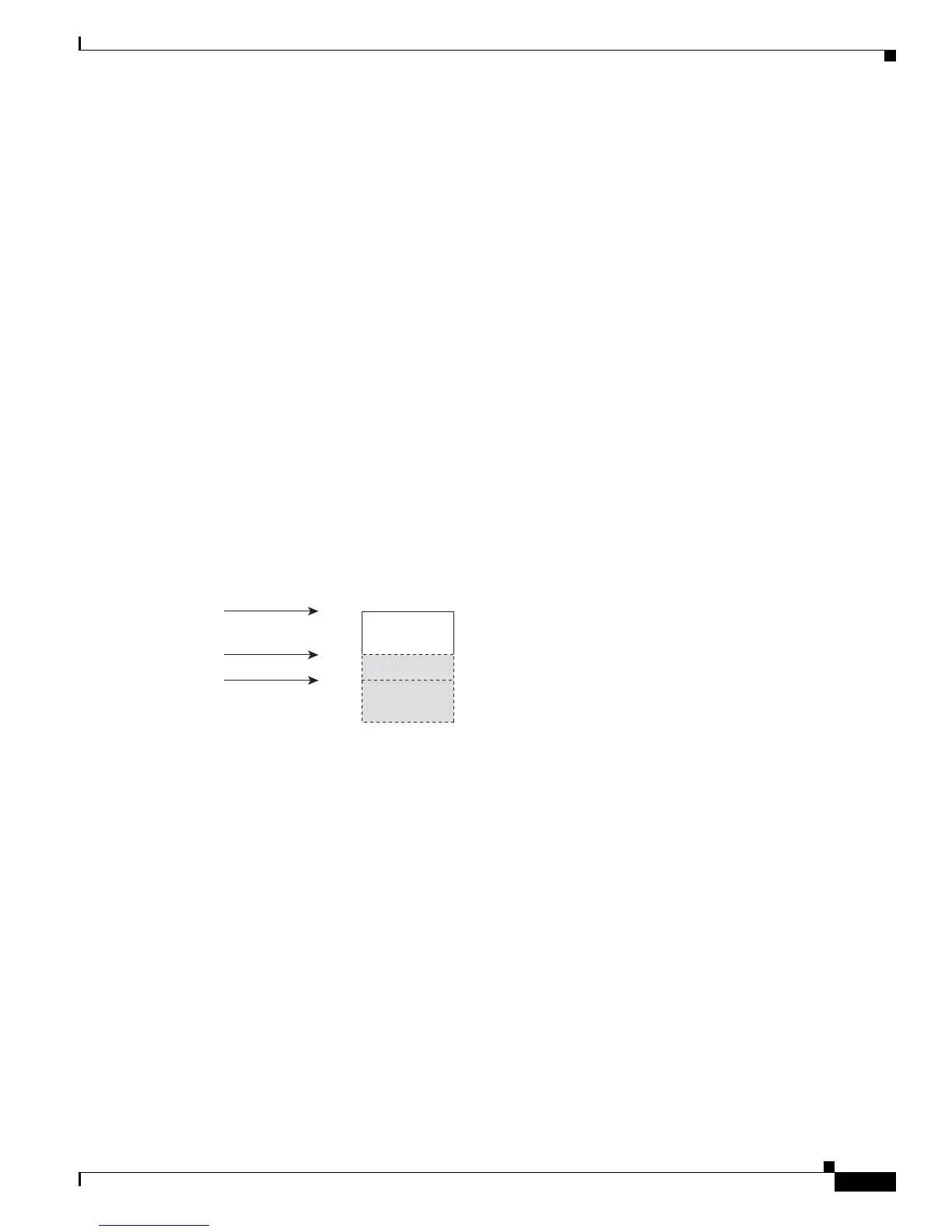39-15
Catalyst 3750-X and 3560-X Switch Software Configuration Guide
OL-21521-01
Chapter 39 Configuring QoS
Understanding QoS
Weighted Tail Drop
Both the ingress and egress queues use an enhanced version of the tail-drop congestion-avoidance
mechanism called weighted tail drop (WTD). WTD is implemented on queues to manage the queue
lengths and to provide drop precedences for different traffic classifications.
As a frame is enqueued to a particular queue, WTD uses the
frame’s assigned QoS label to subject it to
different thresholds. If the threshold is exceeded for that QoS label (the space available in the destination
queue is less than the size of the frame), the switch drops the frame.
Each queue has three threshold values. The QOS label is determines which of the three threshold values
i
s subjected to the frame. Of the three thresholds, two are configurable (explicit) and one is not (implicit).
Figure 39-8 sh
ows an example of WTD operating on a queue whose size is 1000 frames. Three drop
percentages are configured: 40 percent (400 frames), 6
0 percent (600 frames), and 100 percent (1000
frames). These percentages mean that up to 400 frames can be queued at the 40-percent threshold, up to
600 frames at the 60-percent threshold, and up to 1000 frames at the 100-percent threshold.
In this example, CoS values 6 and 7 have a greater importance than the other Co
S values, and they are
assigned to the 100-percent drop threshold (queue-full state). CoS values 4 and 5 are assigned to the
60-percent threshold, and CoS values 0 to 3 are assigned to the 40-percent threshold.
Suppose the queue is already filled wi
th 600 frames, and a new frame arrives. It contains CoS values 4
and 5 and is subjected to the 60-percent threshold. If this frame is added to the queue, the threshold will
be exceeded, so the switch drops it.
Figure 39-8 WTD and Queue Operation
For more information, see the “Mapping DSCP or CoS Values to an Ingress Queue and Setting WTD
Thresholds” section on page 39-76, the “Allocating Buffer Space to and Setting WTD Thresholds for an
Egress Queue-Set” section on page 39-80, and the “Mapping DSCP or CoS Values to an Egress Queue
and to a Threshold ID” section on page 39-82.
SRR Shaping and Sharing
Both the ingress and egress queues are serviced by SRR, which controls the rate at which packets are
sent. On the ingress queues, SRR sends packets to the stack or internal ring. On the egress queues, SRR
sends packets to the egress port.
You can configure SRR on egress queues for sharing or for shaping. Ho
wever, for ingress queues, sharing
is the default mode, and it is the only mode supported.
In shaped mode, the egress queues are guaranteed
a percentage of the bandwidth, and they are
rate-limited to that amount. Shaped traffic does not use more than the allocated bandwidth even if the
link is idle. Shaping provides a more even flow of traffic over time and reduces the peaks and valleys of
bursty traffic. With shaping, the absolute value of each weight is used to compute the bandwidth
available for the queues.
CoS 6-7
100%
60%
40%
1000
600
400
0
CoS 4-5
CoS 0-3
86692

